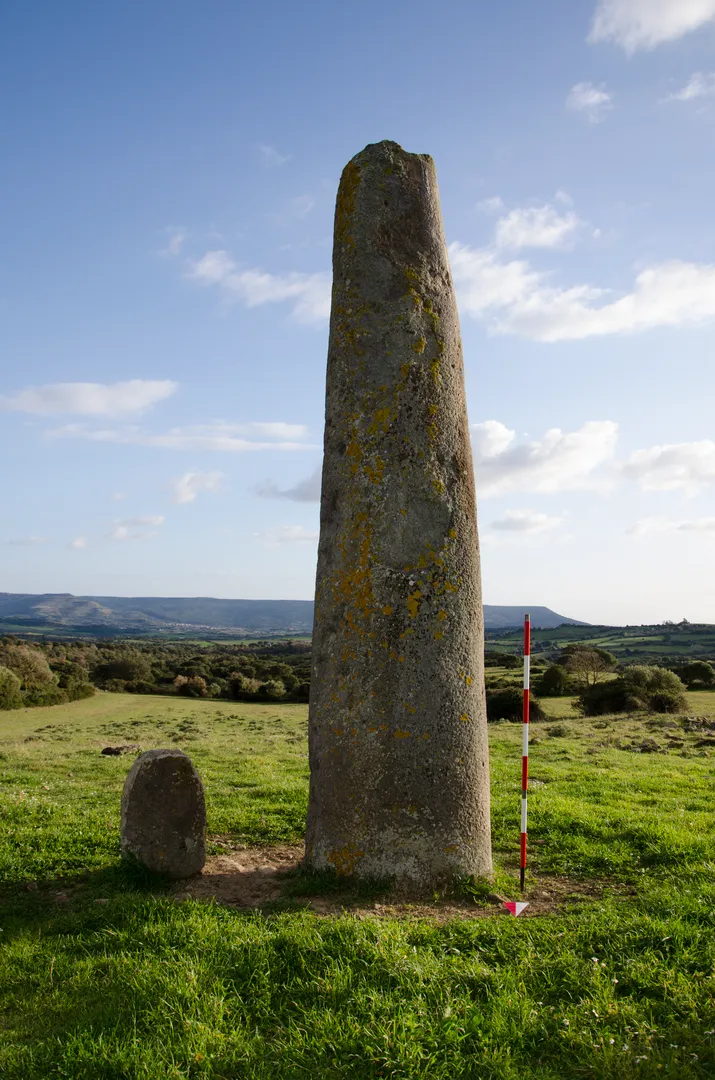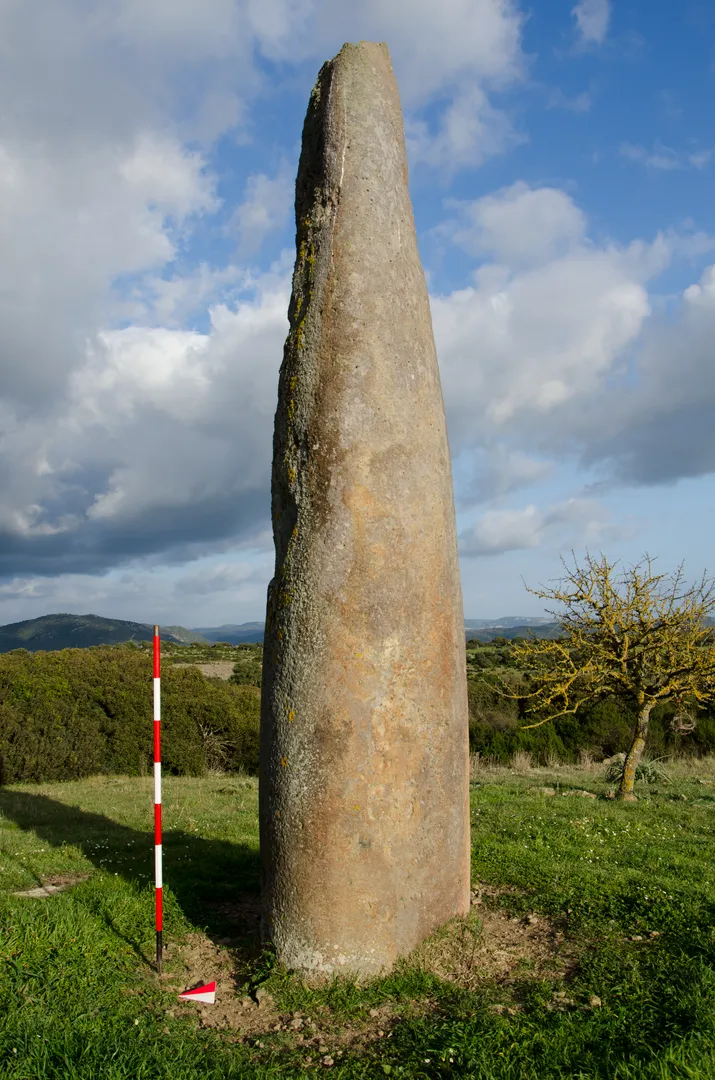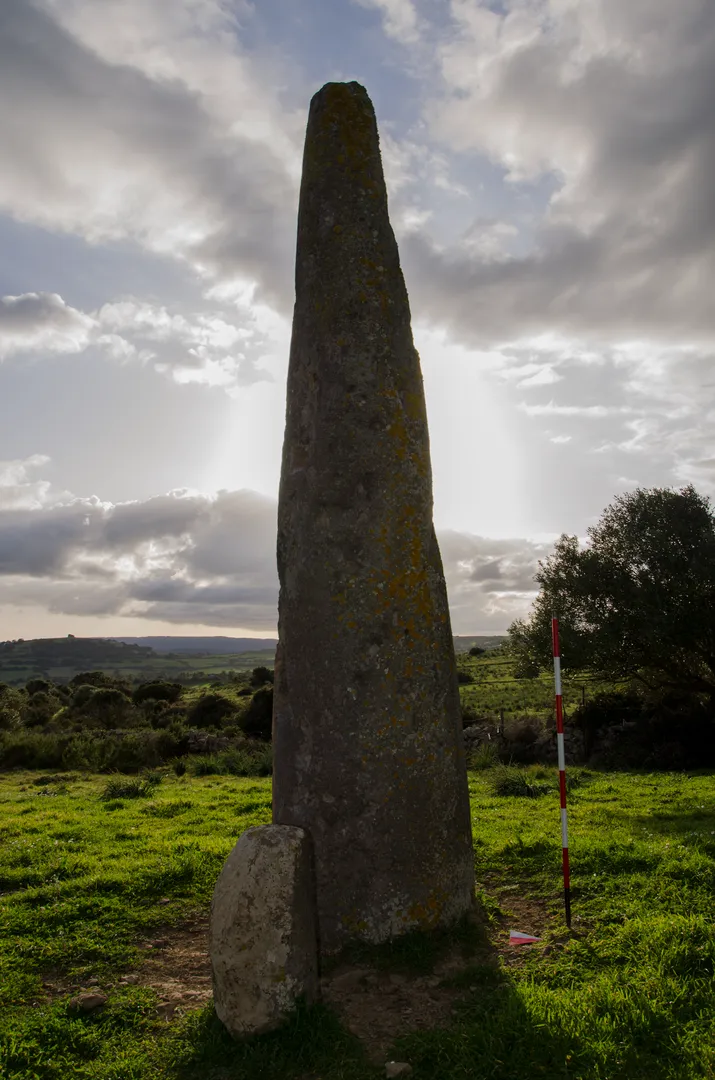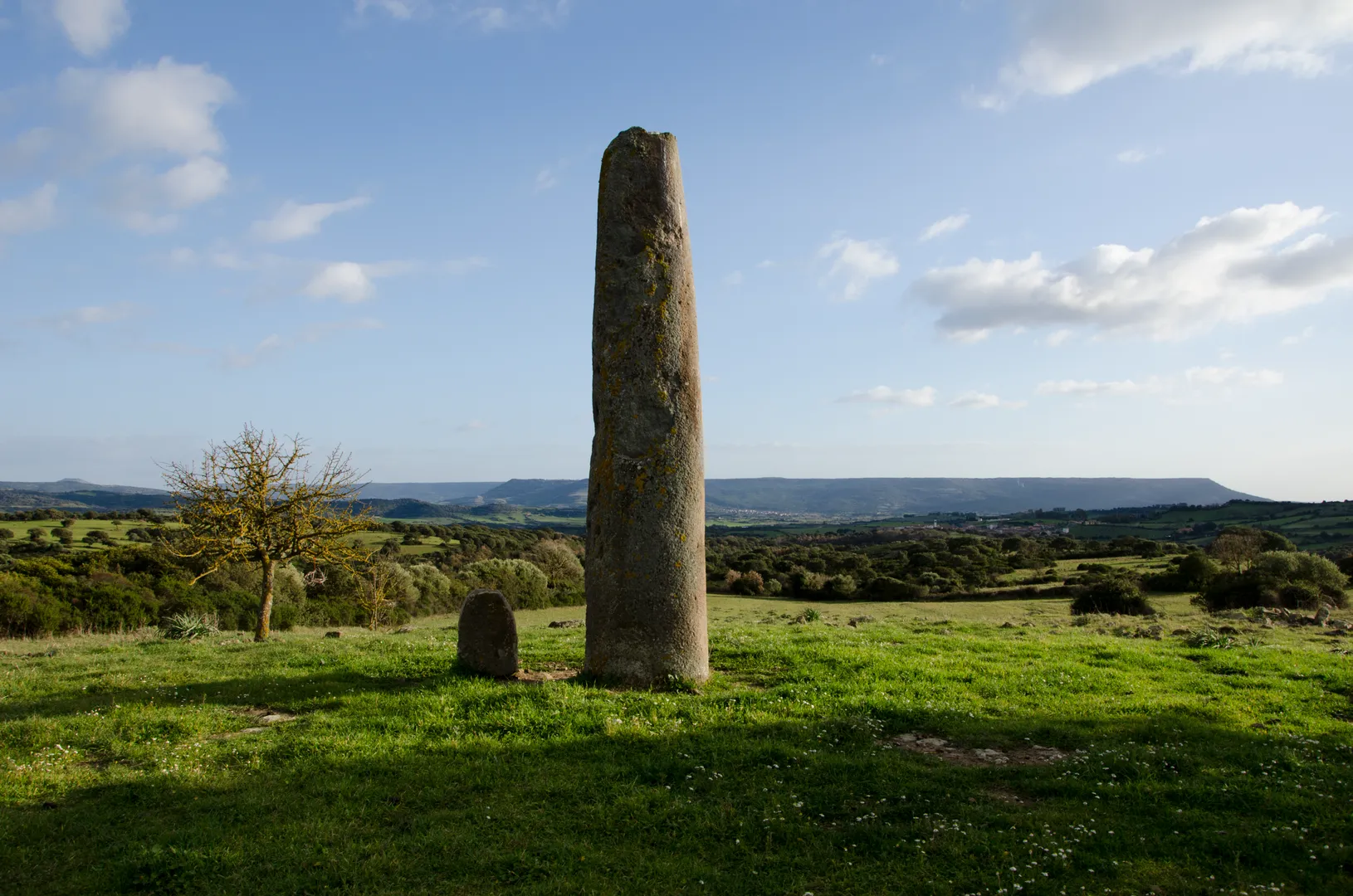Menhir of Monte Corru Tundu
A prehistoric monolith erected vertically, symbol of ancient religious cults and ritual practices.
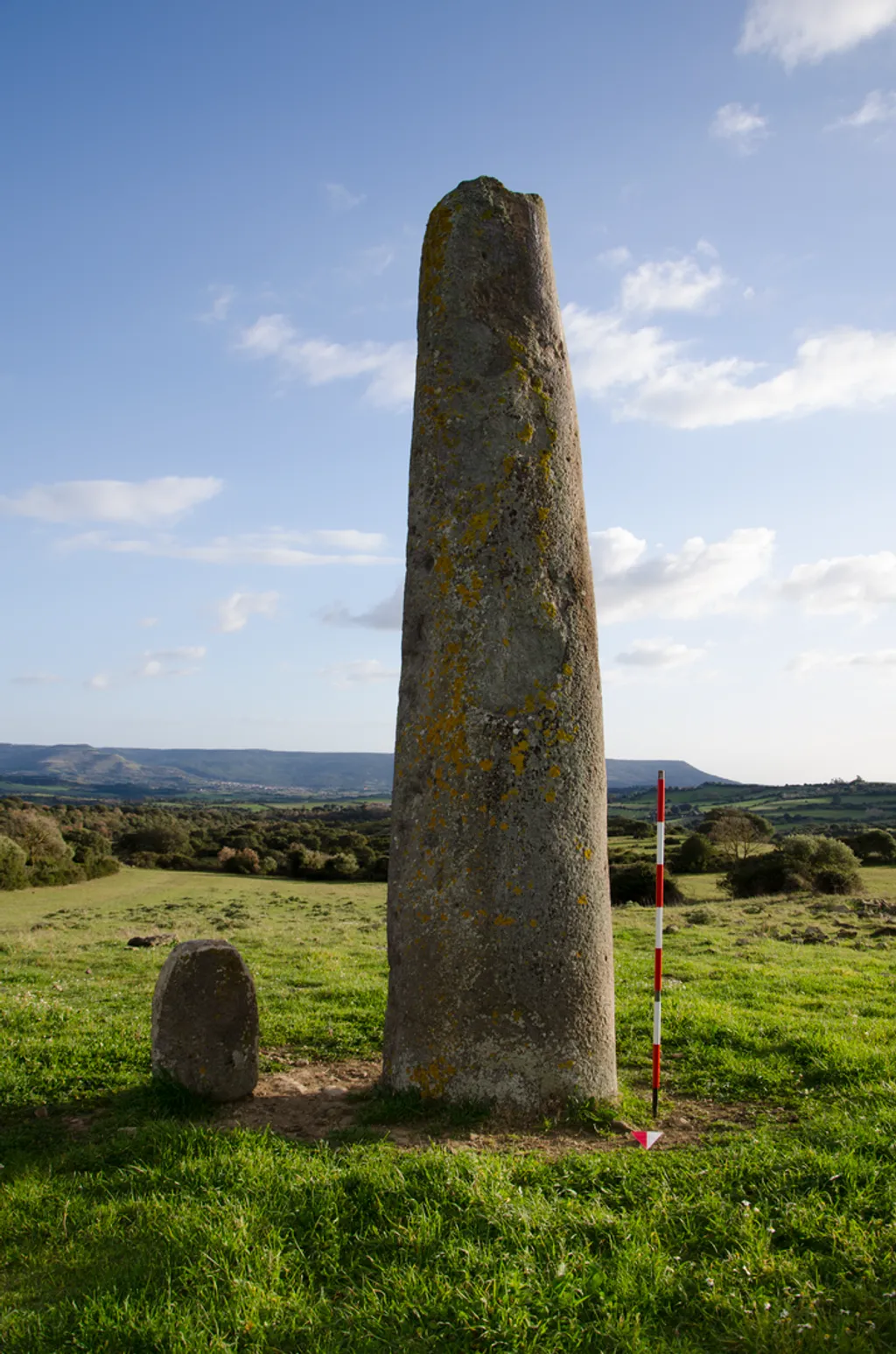
Menhir of Monte Corru Tundu
Menhir of Monte Corru Tundu
Contact
Access information
To reach the locality of Monte Corru Tundu from the outskirts of the village, take Via Felice Cau and continue for 1.6 km along the road, which eventually becomes unpaved. At the end of the road, just before a gate, take the path on the right, which can still be driven on for a short distance. Continue on foot along the ancient road carved into the rocky outcrop, which still bears the ruts left by passing carts.
The trachyte menhir is located on a hill near the domus de janas Necropolis of Is Forrus and the prehistoric village of Genna Storti.
It is a thin monolith (height 5.75 m, circumference at base: 3.27 m), characterized by a semicircular section, with a flat façade facing south featuring three circular cups. The surface is well finished and hammered; the tip is broken and rests close to the base.
Based on the typological analysis and the existing bibliography, the erection of the menhir may be associated with the end of the V-third quarter of the 3rd millennium BCE. (4100-2300 cal. BCE).
The menhirs were thought to be perceived as the dwelling of a supernatural force, a divine being or “heroized” ancestors. Another theory suggests an association between the menhir-fertilizer and the land-fertilized, in the context of the predominantly agricultural economy of Neolithic and Eneolithic populations. The soil symbolizes Mother Goddess who gives birth to the plants which feed human beings. On the other hand, the menhir evokes the male member that, thanks to the soil’s mysterious powers, inseminates it: in this way the human and plant cycles are completed.
Another hypothesis suggests that menhirs were used to mark and sanctify particularly important areas: in the villages, they might mark the sacred place near the community or ancient routes; near the tombs, they have a protective function, but also mark a funerary site.
Bibliography
- Merella S. 2009, I menhir della Sardegna, Sassari.
